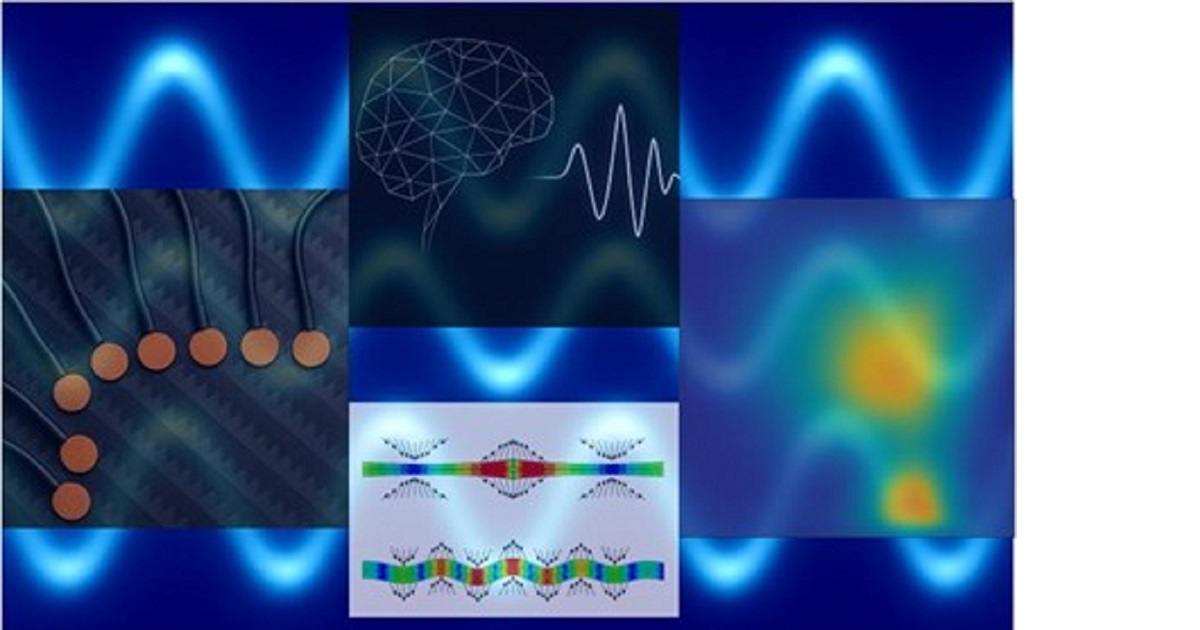Advances in and Research on Ultrasonic Non-Destructive Testing
A special issue of Applied Sciences (ISSN 2076-3417).
Deadline for manuscript submissions: 20 January 2026 | Viewed by 1796

Special Issue Editors
Interests: signal processing; laser doppler vibrometers; non-destructive testing; networks of sensors; composite plates; piezoelectric transducers; Lamb waves; ultrasonic guided waves; damage imaging; ultrasonic testing; machine learning; anomaly detection; autoencoders; wavenumber–frequency domain; reconstruction algorithms; ultrasonic imaging; damage indexes
Interests: ultrasonic testing; signal processing; sensors; non-destructive testing; instrumentation; measurement
Special Issues, Collections and Topics in MDPI journals
Interests: non-destructive testing; networks of sensors; piezoelectric transducers; Lamb waves; ultrasonic guided waves; damage imaging; ultrasonic testing; ultrasonic imaging; instrumentation; measurement
Special Issue Information
Dear Colleagues,
Ultrasonic Non-Destructive Testing (NDT) is undergoing a transformation supported by continuous innovations in wave propagation theory, advanced sensor technologies, data acquisition systems, sophisticated signal processing algorithms, and Artificial Intelligence (AI). This rapid progress is enabling researchers to move beyond the limitations of conventional methods and explore ultrasonic inspection’s full potential for use with increasingly complex materials and structures and in industrial environments.
While conventional Ultrasonic Testing (UT) remains a foundational technique in quality assurance and defect detection, recent advancements have transformed Ultrasonic Testing into a powerful, high-resolution diagnostic tool. Emerging techniques such as Phased Array Ultrasonic Testing (PAUT) offer beam steering, dynamic focusing, and advanced visualization capabilities, while Ultrasonic Guided Waves (UGWs) enable the long-range monitoring of pipelines, rails, and other extended structures with limited access points. Electromagnetic Acoustic Transducers (EMATs) eliminate the need for couplants and physical contact, making them ideal for use with high-temperature, coated, or rough-surfaced materials in harsh industrial environments. Meanwhile, Ultrasonic Wavefield Imaging (UWI), which leverages full-field ultrasonic measurement and advanced reconstruction algorithms, provides a comprehensive spatial and temporal visualization of waves’ interactions with defects. Laser Ultrasonics offers non-contact optical ultrasound generation and detection, opening up new possibilities for the precise inspection of delicate or moving parts. These advanced ultrasonic techniques are redefining the limits of defect detection and sizing and becoming the foundation for reliable Structural Health Monitoring (SHM).
For this Special Issue, we invite the submission of cutting-edge research articles, technical reviews, and application-driven case studies that explore novel methodologies, innovative technologies, and emerging trends in ultrasonic NDT techniques. Manuscripts with a focus on theoretical modeling, numerical simulation, experimental validation, sensor and system development, data fusion, and real-world industrial implementation are particularly encouraged.
Dr. Mohsen Barzegar
Dr. Bo Feng
Dr. Dario J. Pasadas
Dr. Vykintas Samaitis
Guest Editors
Manuscript Submission Information
Manuscripts should be submitted online at www.mdpi.com by registering and logging in to this website. Once you are registered, click here to go to the submission form. Manuscripts can be submitted until the deadline. All submissions that pass pre-check are peer-reviewed. Accepted papers will be published continuously in the journal (as soon as accepted) and will be listed together on the special issue website. Research articles, review articles as well as short communications are invited. For planned papers, a title and short abstract (about 250 words) can be sent to the Editorial Office for assessment.
Submitted manuscripts should not have been published previously, nor be under consideration for publication elsewhere (except conference proceedings papers). All manuscripts are thoroughly refereed through a single-blind peer-review process. A guide for authors and other relevant information for submission of manuscripts is available on the Instructions for Authors page. Applied Sciences is an international peer-reviewed open access semimonthly journal published by MDPI.
Please visit the Instructions for Authors page before submitting a manuscript. The Article Processing Charge (APC) for publication in this open access journal is 2400 CHF (Swiss Francs). Submitted papers should be well formatted and use good English. Authors may use MDPI's English editing service prior to publication or during author revisions.
Keywords
- non-destructive testing
- ultrasonic testing
- structural health monitoring
- PAUT
- signal processing, sensor network
- EMAT
- sensor arrays, ultrasonic guided waves
Benefits of Publishing in a Special Issue
- Ease of navigation: Grouping papers by topic helps scholars navigate broad scope journals more efficiently.
- Greater discoverability: Special Issues support the reach and impact of scientific research. Articles in Special Issues are more discoverable and cited more frequently.
- Expansion of research network: Special Issues facilitate connections among authors, fostering scientific collaborations.
- External promotion: Articles in Special Issues are often promoted through the journal's social media, increasing their visibility.
- Reprint: MDPI Books provides the opportunity to republish successful Special Issues in book format, both online and in print.
Further information on MDPI's Special Issue policies can be found here.








